When I began searching for the best visual product customization software, I didn’t expect it to be so challenging. My team and I run a small business on custom gifts. As orders increased, customers were eager to preview their personalized designs in real time before ordering, but we lacked such technology. I needed a solution that met our needs and improved the customer experience.
Thus, I tested 30+ visual product customization software: some programs catered to print-on-demand needs, while others focused more on advanced 3D visualizations. Still, I had clear demands. I needed a solution that supported real-time customization, offered an intuitive interface, and could be easily integrated into my current eCommerce setup.
I collaborate with the FixThePhoto team, who help me with photo editing. So, I decided to ask for their opinions. They helped me identify the must-have features for personalization software and even joined me in testing a few options to ensure I’d end up with the best possible solution. The main criteria I focused on:
One of the biggest perks of AI product visual customization software is making instant, professional-looking previews of custom designs. No matter whether you import an image, add a text description, or specify colors, the software automatically shows how the final product will turn out. This is beneficial both in terms of time saved and customers’ confidence in their choices.
Artificial intelligence software also supports advanced 3D customization. Instead of a static image, customers get a fully interactive 3D view. They can rotate, scale, and preview their product from all sides. The AI handles all the adjustments behind the scenes, adapting the 3D model in real time based on the customer’s changes.
In addition, AI-driven augmented reality (AR) levels up personalization by showing products in the real world. Customers can preview a custom mug on their actual kitchen counter or see how a personalized shirt fits them. They only need a smartphone to get a lifelike picture. It’s a great way to boost buyer confidence and minimize returns.
Another time-saving bonus is that AI can prepare your files for print automatically. It takes care of proper sizing, alignment, and format, so you don’t have to worry about mistakes or delays in production.
Lastly, AI tools can analyze user behavior and recommend relevant design options, colors, or templates. These targeted suggestions enhance the customer experience and often lead to higher conversion rates.
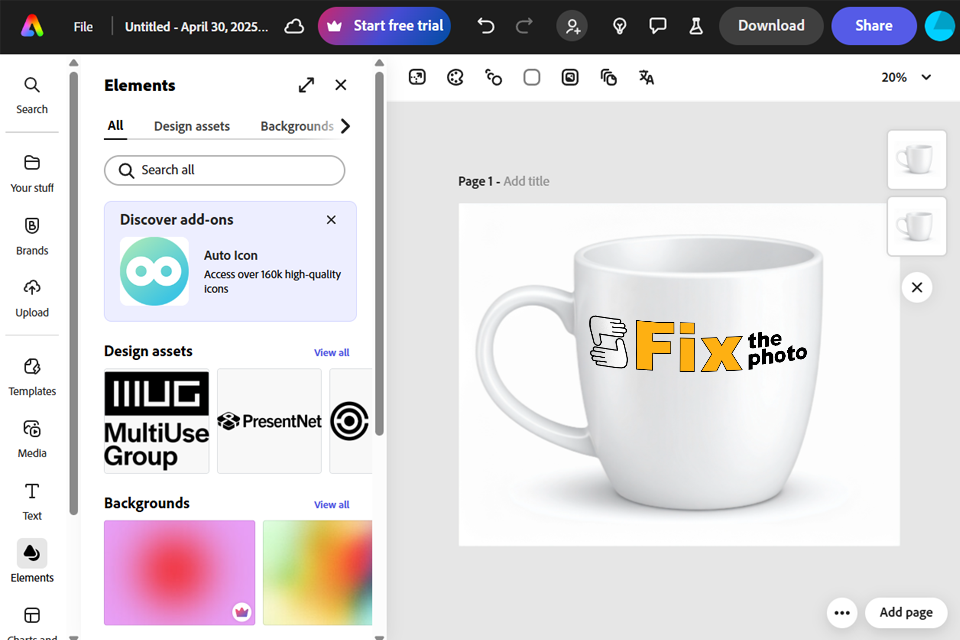
Running a small shop with personalized gifts, I often use Adobe Firefly. It’s incredibly helpful for designing product visuals and on-brand imagery without spending hours editing. One feature I use all the time is the text-to-image tool. Once, I typed in a phrase, “this abstract painting in a warm, cozy living room,” and Firefly instantly created a beautiful, realistic scene from it.
Adobe Firefly AI Art Generator in Photoshop is my go-to tool when I want to experiment with styles. I like playing with hyperrealism, watercolor, and abstract styles most of all. Sometimes, I use reference images to achieve the look I’m going for. Generally, this feature is a huge help when I need to stick to a client’s brand style or create visuals for a specific marketing goal.
Another highlight of this visual product customization software is the possibility to combine product images with AI-created backgrounds. Thus, I can demonstrate my products in natural-looking scenes and help customers imagine how the final product will look in their settings.
Not long ago, Firefly, like many other free Adobe software, got an update. Now, its features allow you to:
The updated version of Firefly will cater to many creative professionals. It will particularly please those who want to generate fresh ideas and participate in projects, using Firefly’s unique, commercially safe AI for video, audio, and images.
Adobe has also launched two new Firefly plans - Adobe Firefly Plus and Adobe Firefly Premium. Using either, you can access the software without a Photoshop subscription.
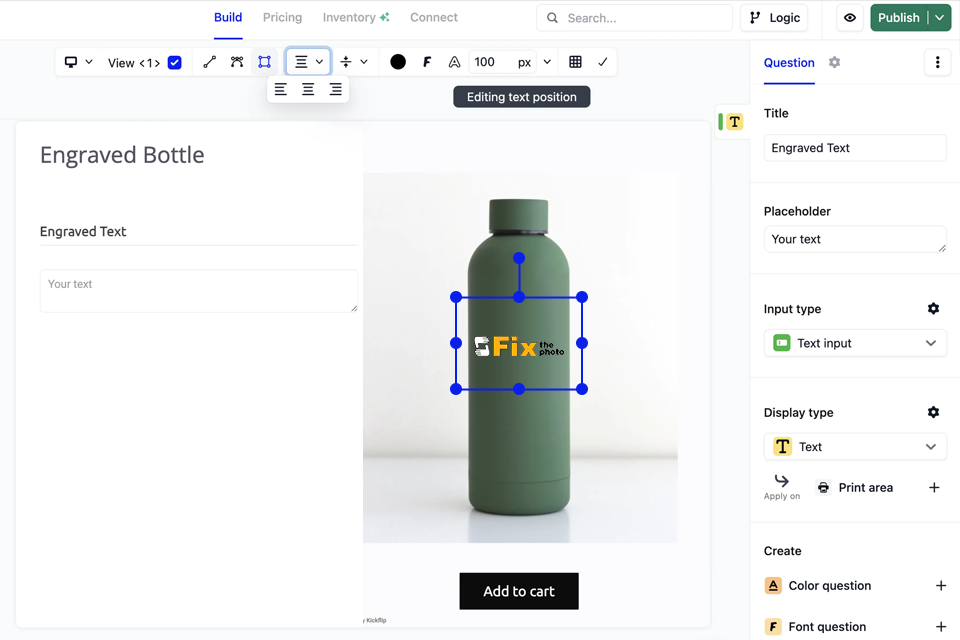
Curious about how KickFlip works, I tested its functionality and was impressed. It updates your designs in real time, so customizing products is easy and even kind of fun. I played around with texts, image uploading, and product adjustment. The results were instant and flawless.
Most of all, I liked the 3D preview. It shows your customized item from all angles, resembling a full 360-degree spin. It’s a great way to give customers all the important visual information, without mastering complicated 3D modeling software.
KickFlip has a drag-and-drop interface. My clients can place and customize images, text, or logos without problems, even if they don’t have a technical background. Generally, the program is beginner-friendly, yet powerful enough for advanced users too.
I also appreciate how easily it connects with major eCommerce platforms, including Shopify and WooCommerce. Thus, I can streamline my workflow and client collaboration.
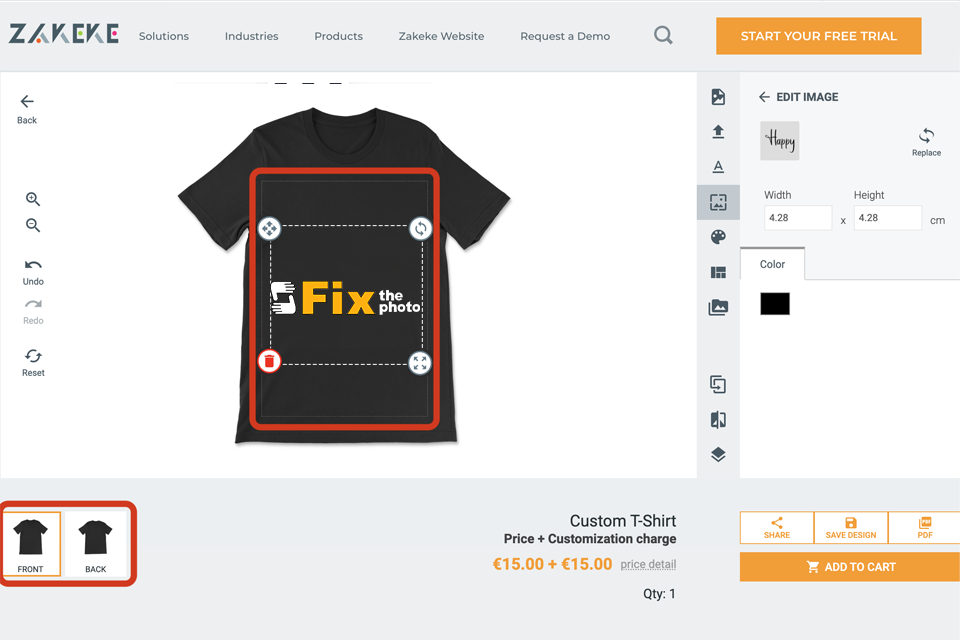
I integrated Zakeke with my Shopify store to test it out. Besides, this visual product customization software market solution is also compatible with WooCommerce and BigCommerce. The getting-to-use process was quick and smooth. I received my first customizable mugs in several hours.
I was stunned by how Zakeke handled complex features - automatic pricing for multicolor prints and multilingual support. With these tools, it was easier to expand my reach and connect with more customers globally.
Zakeke turned out to be even more fascinating to use once I dug into its customization features. I imported product models and let customers personalize them live. People could add names and pictures, and alter colors. Thanks to such a customer-centric approach, I got a noticeable spike in user engagement.
Besides, I devoted time to experimenting with Zakeke’s print automation by integrating it with Printful. The platform created production-ready files, namely, PDF, EPS, or PNG automatically. I didn’t need to convert or adjust anything manually. Thus, I could get the result faster and minimize possible inconsistencies.
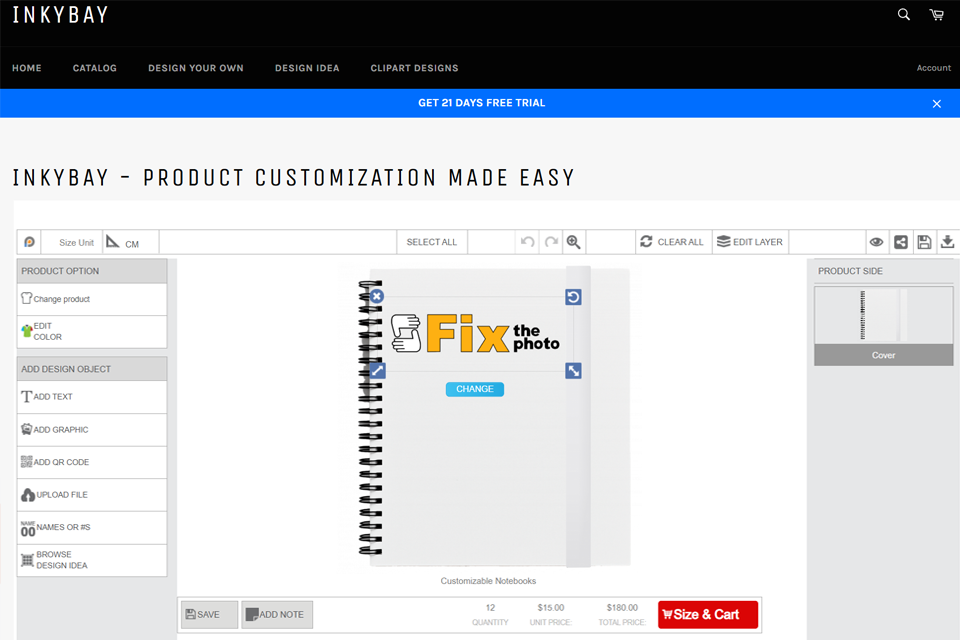
One of the bragging points of Inkybay is its user-friendly design. Even people without prior experience can start designing right away, upload their images, type in custom text, or pick from clipart.
I personally tested the functionality with several mockups - a family photo mug, a quirky T-shirt, and a phone case with a custom logo. The results looked professional. Moreover, the whole process from design to placing the order was smooth.
If you want to control virtually every aspect of your products, this can be the best visual product customization software out there. For instance, I could determine exactly how much users could customize, which sections they could edit, and even tweak the pricing depending on how complex the design was.
The Product Configurator is a huge plus if you’re offering products with several customizable parts. I normally use it for basic gift items, but I also tried it with multi-part designs. For example, I customized both the front and back of a t-shirt, and it handled everything remarkably. It is also easy to change colors and materials, as if you are using a purpose-made t-shirt design software.
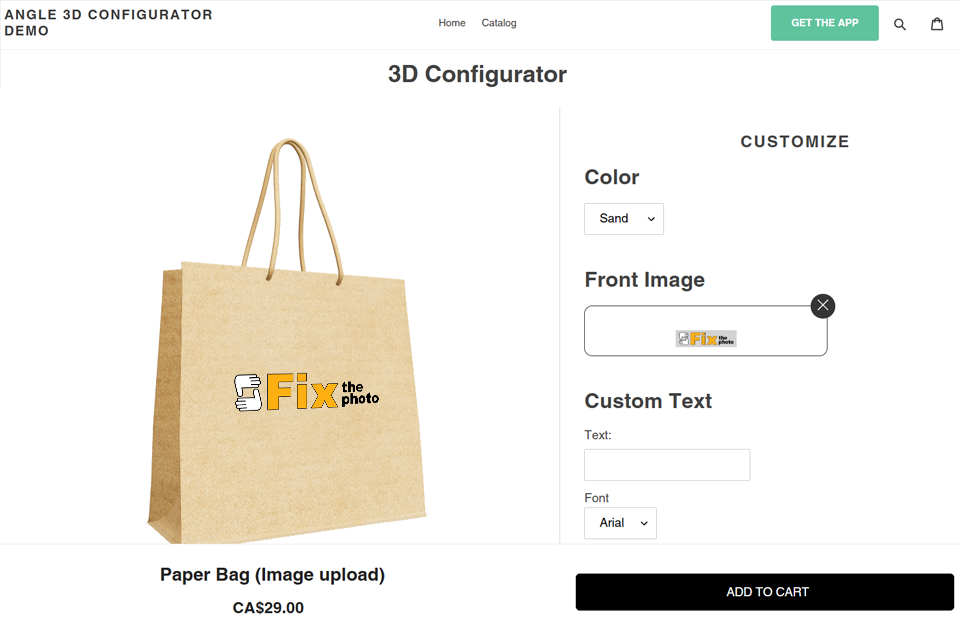
What sets Angle 3D apart from regular mockups is the interactivity. My clients can spin the chosen product around, zoom in, and get a complete 360° view of what they’re customizing. It really builds trust when they can see every side of a design, which is presented as 3D models, before ordering.
With the easy-to-use drag-and-drop editor, my clients can tweak their designs the way they like. It is possible to move, scale, or rotate elements in just a few taps. The interface is mobile-friendly. Once you’re done, the platform instantly creates high-res, print-ready files. As you can see, the entire process is quick and straightforward.
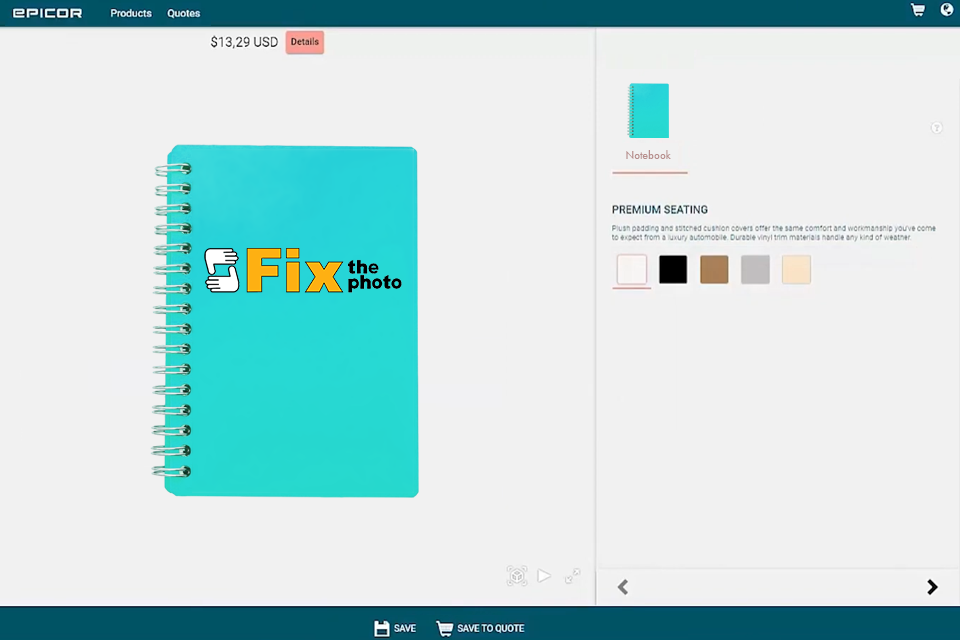
I wasn’t sure if Epicor was right for my small shop at first. It seemed a bit too advanced. But once I started to use it, I saw the real benefit - even as a small business owner, I appreciated that it had room to grow with me. Another notable feature is that it combines product personalization, quoting, and ordering. That’s a huge plus when you’re handling large custom orders.
Epicor stands out with a smart approach to product pricing. For instance, if a mug’s color only supports black-and-white printing, the system automatically adjusts the available choices. This helps prevent mistakes and makes customer service a lot easier for me down the road.
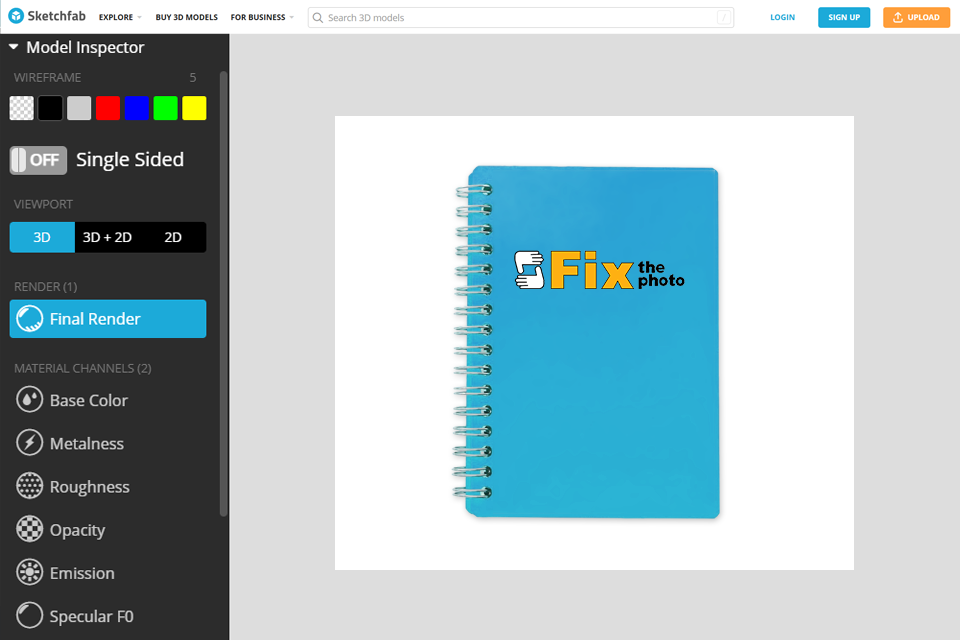
First off, I imported simple 3D models of my top-selling items onto Sketchfab. Those were a coffee mug, a unisex t-shirt, and a tote bag. The 3D visualization process appeared to be very straightforward. It is a relief for someone like me who’s not very tech-savvy. Sketchfab supports various 3D file formats, including OBJ, FBX, and glTF.
It is possible to add interactive notes to your products to guide customers through different customization choices. For instance, you can enter “Select print area” or “Check out the font options here.” Plus, if customers use VR devices or smartphones, they can envisage the product in their own space, taking advantage of AR. This works great for larger items like canvas prints.
To determine the best easy visual product customization software, we chose several popular options for small to mid-sized businesses. All chosen options offered both 2D and 3D customization. We created test online stores with sample products, like personalized gifts, to simulate a real small business.
Each software was tested with various tasks to figure out the following aspects. Was it easy to get started? Were the customization tools straightforward? Did the personalized products look realistic? And could it facilitate real-time communication with customers?
Julia Newman made sure each software could easily connect with big online shopping sites - Shopify, WooCommerce, and Etsy. This is paramount for anyone selling online. Tati Tailor tested how good the product looked as customers were customizing it, how quickly the design tools reacted, and if customers could personalize their items without dealing with complicated settings.
To understand the effectiveness of every program, we worked with images, 3D designs, and even print-ready templates. Then, Kate Gross stepped in to mimic real-life orders and see whether the exported files were ready for printing or engraving.
In addition to features, our team also considered prices, scalability, and support. After all, even the flashiest tool can cause trouble if it costs too much or leaves you hanging when you need help. That particularly looms large for small businesses working with limited resources.